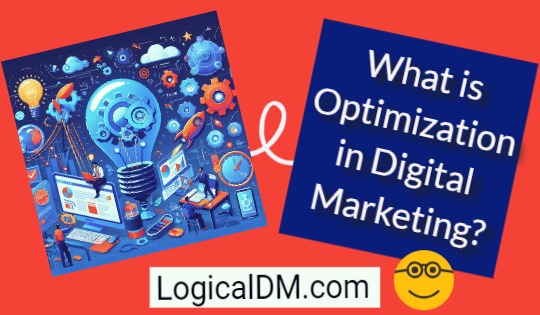
Digital marketing optimization (DMO) is the process of analyzing and optimizing digital marketing campaigns in order to increase ROI, produce tangible results, and ultimately reduce marketing expenses in the long run.
Marketing optimization should be an ongoing process that you or a member of your team should perform regularly to ensure that campaigns are working effectively.
It is a Process of Analyzing and Optimizing Digital Marketing Campaigns
Digital marketing optimization refers to the practice of adjusting your online marketing strategy to enhance its performance, such as changing keywords or analyzing campaign data or even altering website design. Through making small modifications such as these, digital marketers can increase effectiveness of campaigns while drawing in more customers.
Marketing successfully in the digital era requires more careful analysis than ever. This is due to an increasingly complex marketing landscape with interconnecting parts requiring multi-channel approaches and integration of various systems - for instance an ad on social media or Google could lead into landing page software, email/CRM software and webinar system for sales - this practice is known as cross-channel marketing.

At the core of any successful digital marketing campaign lies data. By leveraging it for insights on what works and doesn't, and helping you understand your audience, this data allows for informed decisions about marketing strategies to reach target audiences effectively.
Digital marketing optimization is an ongoing process that is vital to any company's growth. Optimized digital campaigns help reduce costs and boost revenues while aligning marketing efforts with business goals, leading to long-term success, and making for more effective digital campaigns that foster long term growth.
It is a Way of Generating Measurable Results
Digital marketing optimization (DMO) refers to the practice of making adjustments to digital marketing campaigns to ensure they meet business goals and are meeting them successfully. Adjustments may be made using various techniques, including monitoring performance or using data analytics tools such as SPSS to assess what is working versus what is not. Note that making such adjustments requires time and effort in order to yield optimal results.
Digital marketers employ various tools and tactics to reach their audiences, from website traffic and conversions to social media engagement and brand recognition. Measuring these metrics is integral to optimizing digital marketing strategy and increasing return on investment (ROI). Unfortunately, marketing metrics can often be complex and hard to comprehend; therefore, it is crucial to have an expert team available who can interpret data accurately so they can help identify ways of improving campaigns.
An effective digital marketing strategy includes using tools that monitor conversations on social media. Tools such as MavSocial can track keywords related to your industry and see what people are talking about on Twitter and Instagram; with this information at hand, content and messaging optimization becomes much simpler.

At a time when big data has increased pressure on marketers to prove their effectiveness, digital marketing optimization offers brands a way to achieve tangible results that align with their business objectives and prove effectiveness. Combining data and technology solutions for optimizing every step of the marketing process - from targeting ads to customer journey mapping.
It is a Way of Maximizing ROI
Digital marketing optimization (DMO) refers to the practice of optimizing digital marketing campaigns in order to generate increased returns, which allows companies to increase their Return On Investment and meet business goals without expending time, money or resources in vain. DMO can help companies remain competitive in the online market place.
Cost per acquisition (CPA) is one of the key metrics when assessing digital marketing campaigns, calculated by dividing total marketing expenditure by number of new customers acquired. If your marketing effort fails to bring in sufficient revenue to cover its CPA costs, changes may need to be implemented immediately.
Average Order Value (AOV), an indicator of customer spending when they make a purchase, can be increased through improved user experiences or by offering up-sell and cross-sell opportunities. Another helpful metric is Customer Lifetime Value which calculates how much each customer spent with your business over their entire relationship with it.
Digital marketing optimization is often a complex and time-consuming task, yet its rewards can be immense. By improving marketing strategies and conversion rates, digital marketing optimization can maximize return on investment (ROI). Budget should be allocated toward activities which provide high returns such as customer loyalty or selling cheap-to-produce products.

It is a Way of Reducing Marketing Costs
As a business owner, you understand the significance of optimizing your marketing. From email and social media campaigns to content marketing strategies and more, marketing optimization involves making necessary adjustments to ensure these campaigns reach the appropriate target audience and achieve desired ROI.
At the core of every optimization cycle lies data collection from your advertising campaigns. Analyzing this information helps identify what's working or not working and can inform changes to be made to increase the effectiveness of campaigns.
An effective digital marketing agency should always seek ways to optimize its campaigns and increase ROI, using data analysis as the basis for revamped strategies that are both cost-efficient and more successful.
Traditional marketers utilized random tactics when initiating marketing campaigns. Unfortunately, this approach tended to consume both time and resources without guaranteeing results. Thanks to digital marketing, organizations now have more efficient methods of approaching their marketing campaigns which allow them to generate tangible results while meeting business goals more easily.
To maximize digital marketing efforts, the right tools must be in place. Analytics and reporting tools offer invaluable data that enables smart revisions of marketing strategies - allowing you to devote more time providing fantastic solutions for customers than tinkering.
Video Content Optimization
Video content optimization involves employing various strategies to ensure that your videos rank higher in search engine results pages (SERPs) and reach more viewers, including optimizing both the content and metadata of your video as well as producing transcripts and closed captions.
SEO goals for video marketing include two primary objectives: link building and conversion increases. To accomplish these goals, your videos must be engaging and captivating enough to attract viewers' interest.

Keywords
Like SEO for written content, keywords are key components of video marketing success. They serve two functions - targeting your target audience while helping search engines understand its nature. One way to find relevant keywords is analyzing the words and phrases your audience searches for similar content to yours; additionally make sure your videos feature descriptive titles, captions and descriptions to complete the picture.
Once you have your keyword selected, incorporate it into the file name before uploading your video to YouTube. Additionally, use it in your video title but ensure it appears naturally and accurately describes what viewers will experience. Finally, incorporate your keyword in your video description or a blog post featuring your video for maximum Google results page visibility.
Transcript
Your video transcripts are an integral component of SEO efforts. They enable Google or YouTube to understand what is being said in your videos and rank them better; additionally they make your videos more accessible for people with hearing impairment.
An essential aspect of creating videos is crafting an attention-grabbing title. This should accurately describe its contents while including relevant search keywords for SEO purposes and attract viewers to click your video link.
Another way to optimize videos is by adding an eye-catching thumbnail image. This could be anything from a screenshot from your video or anything that attracts viewers. Furthermore, closed captions and transcripts of your video can help increase search engine rankings while reaching more viewers.
Embedding
Video content is an effective way to engage consumers and drive traffic to your website, yet many marketers forget its full scope. Video SEO must also be optimized like written content in order to rank highly on search engine result pages (SERPs).
First, create a video title that accurately encapsulates its contents while naturally including your search keyword. Next, include an attractive thumbnail image that will catch people's attention and prompt clicks.
Be sure to include transcripts as an SEO ranking boost, as this makes your videos more searchable and accessible to non-native speakers, deaf people, and those with hearing impairments. Transcripts also increase SEO narrative and can improve page rankings.

Schema Markup
Adopting schema markup to video content optimizes it for search engines. Although its structure data code remains invisible to viewers, it enables search engines to better interpret your video and deliver more precise search results.
As an example, it could provide the date of creation or expiration and offer users who are searching for specific information a brief summary.
An effective title for video content optimization is key. A title should include keywords related to what's being searched, while also being short enough to entice viewers and avoid keyword stuffing. With keywords in place that help boost SEO rankings in search engine results pages (SERPs), keeping up-to-date is also key - adding schema markup frequently keeps content up-to-date and helps increase viewership.
Social Media
Social media offers multiple strategies for optimizing video content. First, ensure it's mobile-friendly; secondly, consider whether or not your video fits best on one platform (Sprout Social offers an ongoing list of upload specifications for various social platforms).
Use a transcription service to convert your video into text that search engines can read, qualifying results for them. Optimizing it with keywords and tags is another way of optimizing for social media.
Create an eye-catching title by including keywords. Write an informative description and upload an eye-catching thumbnail image, making sure to optimize metadata as well. YouTube is particularly attentive to this aspect; optimizing metadata ensures it appears in relevant search results.
Final Thoughts
Digital marketing optimization is a crucial aspect of a successful online business. By implementing the strategies and tactics discussed in this article, you can optimize your website, increase traffic, improve engagement, and generate more leads and sales. Remember to constantly monitor your metrics and adjust your strategy accordingly to keep up with the ever-evolving digital landscape. By staying up to date with the latest trends, tools and technologies, you can stay ahead of the competition and grow your business online. We hope this article has been helpful in guiding you towards achieving your digital marketing goals. Start optimizing today!
 Add Row
Add Row  Add
Add 



